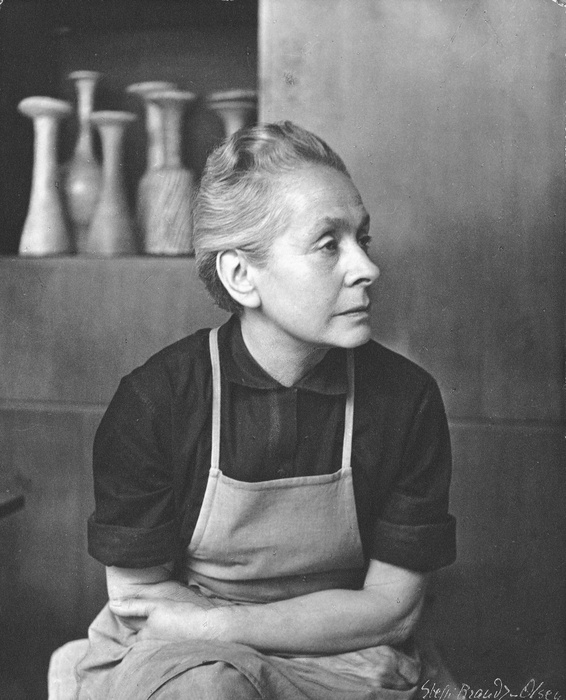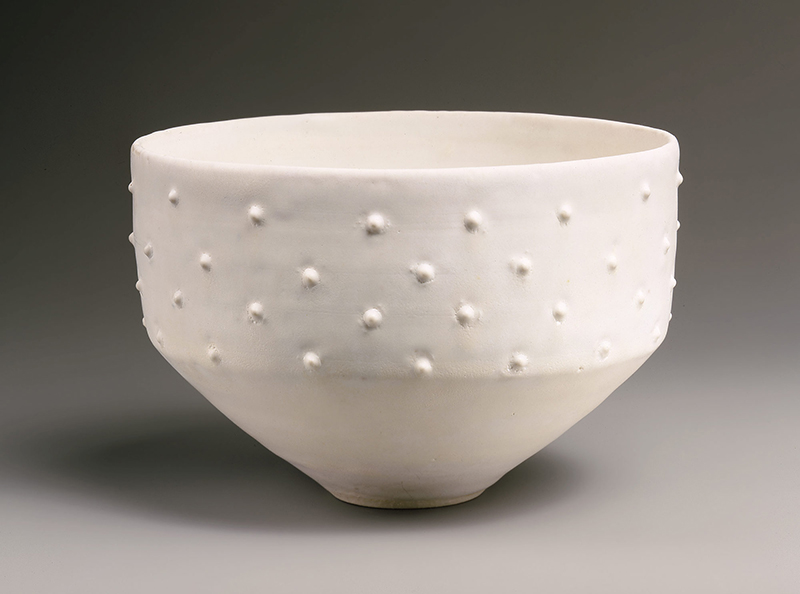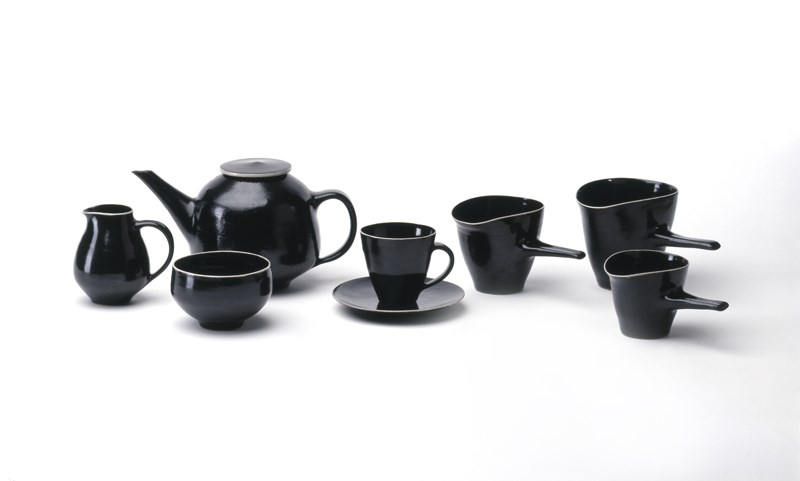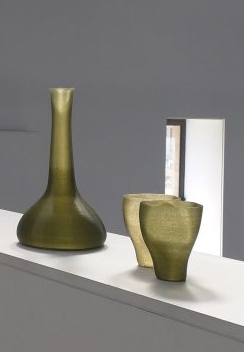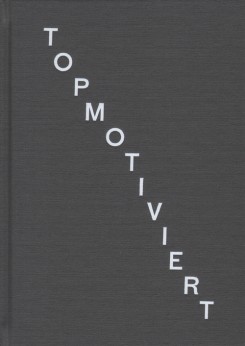Lucie Rie’s story
Born as Lucie Gomperz in Vienna, she grew up in a Jewish family of Sigmund Freud consultants. After studying pottery at the Vienna Kunstgewerbeschule her success came immediately. She could exhibit at the Paris International Exhibition and won there a few years later the silver medal. In 1938, when she was thirty-six years old, she flew to England because of Nazism. She got to know the nineteen years old Hans Coper (also a fugitive of the Nazi regime) and worked with him together from 1946 until 1958.[x]
Mostly Lucie Rie and Hans Coper are called “British Potters” even tough they are neither from England but refugees.
Lucie Rie’s speciality
In some parts of her life she didn’t see a purpose in her objects. But at least with the work of Coper it came fully back to her. She was not following the conventional process of bisque-firing her work, then glazing and re-firing it. Instead she was very experimental and loved to put her glace direct onto the unfired clay before the first bisque.
Lucie Rie in the Stedelijk
In the Stedelijk Museum you’ll find two vases and a plate by Lucie and a corporation work with Hans Coper. The objects go back to 1953 when Rie and Coper mostly worked together. Rie’s series shows mostly white glazed vases in porcelain. Her work on the surface was very creative. For these objects she used needles to make scratches in the porcelain, which she filled with another colour of glaze. From the look you cannot say if the objects are out of earthenware or something else. Fed with some knowledge you get to know about the content of the ceramics — porcelain. The corporation with Coper, could have been from nowedays. A tea service set in stoneware, black glace — timeless. Even though Coper was mostly a assistant to Rie both names are engraved in the ceramic.
Lucie Rie’s surface
Lucie Rie’s way of dealing with the surface attracts me a lot. It is hard to simply stand in front of it in the museum. You want to interact with her art.
«She found her satisfaction in a needle.
A needle to change the surface.
Drive it deep to change the outside — the visible.
To change the way it feels under your hands. Striation.
My imagination.
But, you’re standing in front of a big thick safety glass.
Her object far away of your senses of touch.
Trying to experience the surface by simply looking at it.
How?
Will I ever experience what she experienced with her hands?
I don’t want to see it from the inside.
No.
I want to feel the surface like she did, sitting on the throwing wheel.
Layering glace on that shape.
Let it dry a little.
Take the needle.
Carve through the porcelain — long elegant scratches.
How must it have sounded?
Fill the scratches with a dark colour.
Fire it.
How did the look change?
Let it cool down.
Hold it. Enjoy it. This softness. Smoothness.
Gently drive the finger around the belly of the vase.
Oh, I wish I could experience the surfaces of Lucie Rie’s.»
Ceramic surface study
Lucie Rie used among other things the needle to manipulate the surface. In my first text I showed work by Ekaterina Semenova who found other inspiring ways to do so by… using milk — old, food waste milk.
